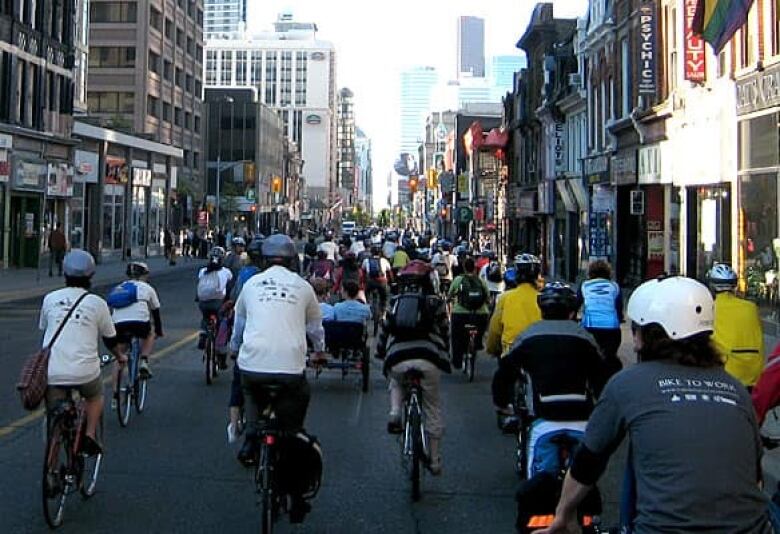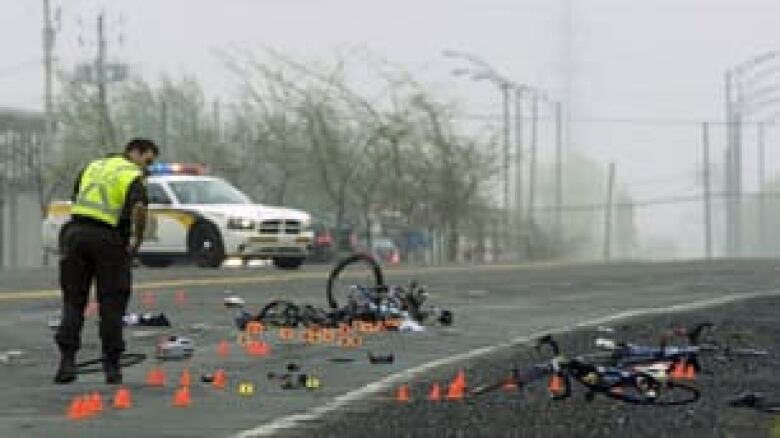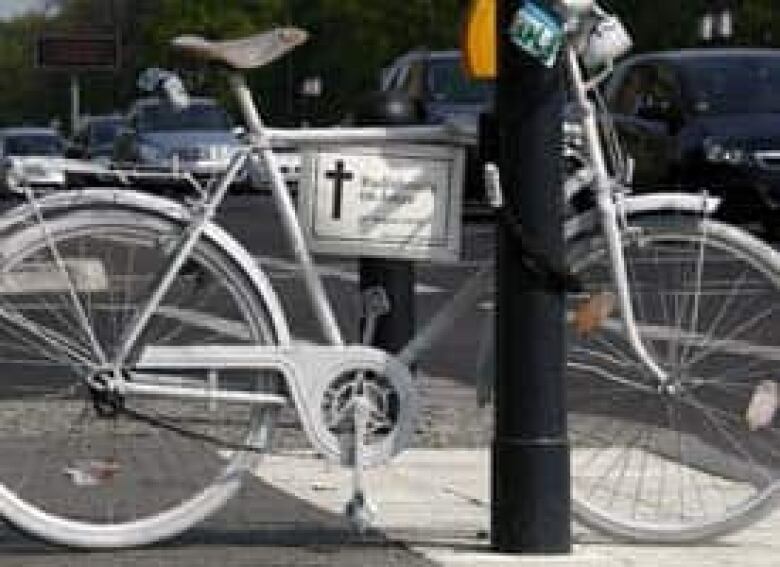Increasing your odds of avoiding bike injuries

And when they meet, the results can be grim almost always for the person on two wheels.

In 2007, the latest year for which statistics are available, 65 cyclists died on Canadian roads. That's 2.3 per cent of the total number of road fatalities, according toTransport Canada.
Around 7,500 cyclists suffer serious injuries every year. It's estimated that as many as 70,000 others are treated in hospital emergency rooms for cycling-related injuries.
It could be worse. In the United States, 698 cyclists died in road accidents in 2007. More than half a million others required treatment in hospital emergency rooms.
However, death and injury rates in several European countries are substantially lower. Cyclists in North America are twice as likely to be killed and eight times more likely to be seriously injured than cyclists in Germany and three times as likely to be killed and 30 times as likely to suffer serious injuries than cyclists in the Netherlands.

In Canada,56 per cent of cyclist fatalities and 85 per cent of serious cycling injuries occur in cities.
Other risk factors include:
- Time of day: 17 per cent of deaths and 23 per cent of injuries occur in accidents during the afternoon rush hour.
- Time of day: 30 per cent of cyclist fatalities occur at night or in artificial light situations.
- Location: You're more likely to be killed or injured at an intersection or at road locations with traffic signals or other traffic control signs.
- Rural areas: 44 per cent of cyclist fatalities that occurred in rural areas were on roads with posted speed limits of 80 km/h or higher.
- Age: Cyclists under the age of 24 have substantially higher death and injury rates than the rest of the population.
What you can do
Most provinces have passed mandatory helmet legislation for cyclists. But in some provinces, the law applies only to people 16 years old or younger. In Prince Edward Island, the law applies to all cyclists, wherever they're riding a bike.
Transport Canada advises all cyclists to:
- Always wear a helmet.
- Always obey the rules of the road.
- Use a light (front and back) at night.
- Wear bright or reflective clothing when riding, especially at night.
- Be vigilant at both intersection and non-intersection locations, especially in urban areas.
- Never assume that motorists will yield, even if you have the right-of-way.
The Environmental Law Centre at the University of Victoria recommends five basic principles to avoid collisions in its Cyclist's Collision Checklist:
- Maintain your bicycle in good working order.
- Be as visible as possible to others.
- Learn the skills needed to control your bike.
- Cycle in traffic safely and predictably.
- Know and obey the rules of the road.
The rules of the road include properly signalling a turn or a lane change, stopping at all red lights and stop signs. Those same rules mean the lane you're riding in is yours and a driver can either pass you in the left lane or patiently wait for your progress. If you do stay on the right side of the lane so cars can pass you, you should also drive about a metre from the curb. If there are parked cars in the lane, make sure you'rea car door's width from those parked cars. A significant cause of bike accidents is driving into a car door that's opening.

You can also make your bike more visible during the day by attaching a fluorescent flag on a 1.8-metre plastic pole to the back wheel. This is especially handy for a child's bike although it's not exactly ideal for someone out training for a bike race.
However, you can do all the right things and still find yourself in trouble. In an accident that left five cyclists seriously injured in Ottawa on July 19, 2009, the cyclists were all riding in a designated bike lane when they were struck in broad daylight.
On May 14, 2010, three cyclists were killed and three others were injured when they were hit by a pickup truck. The cyclists, who were training for a triathlon, were riding in single file at the time of the accident on a highway east of Montreal. The road did not have paved shoulders.
Transport Canada says there are steps car and truck drivers can take to help make the roads safer for everyone:
- Always be on the lookout for and yield to cyclists and pedestrians, even if they don't have the right-of-way.
- Always obey traffic signals and traffic control signs.
- Be prepared for cyclists and pedestrians to appear unexpectedly at both intersection and non-intersection locations, on both urban and rural roadways.
Looking for answers
At the University of British Columbia, the Centre for Health and Environment Research is studying ways of making cycling safer in Canadian cities. Researchers are currently collecting extensive data about cycling injuries in Vancouver and Toronto. They're talking to injured cyclists and gathering information about the types of routes they were riding when their accident occurred. The study is still in its preliminary stages.
If you thought getting off the road is the key to avoiding injury, you might want to think again. Two studies of cyclists in Toronto and Ottawa found that cyclists riding on sidewalks were four to eight times more likely to suffer an injury than cyclists on the road and 1.2 to 1.8 times more likely to be injured on a paved or unpaved multi-use path than on the road.
In the Netherlands, another study showed that while you are twice as likely to be injured while riding in an on-road bike lane than an off-road bike path, the pattern was nearly reversed when it came to intersections. The danger increased when an off-road bike path crossed a road.
Wherever you ride, it's driver beware.












_(720p).jpg)


 OFFICIAL HD MUSIC VIDEO.jpg)
.jpg)



























































































